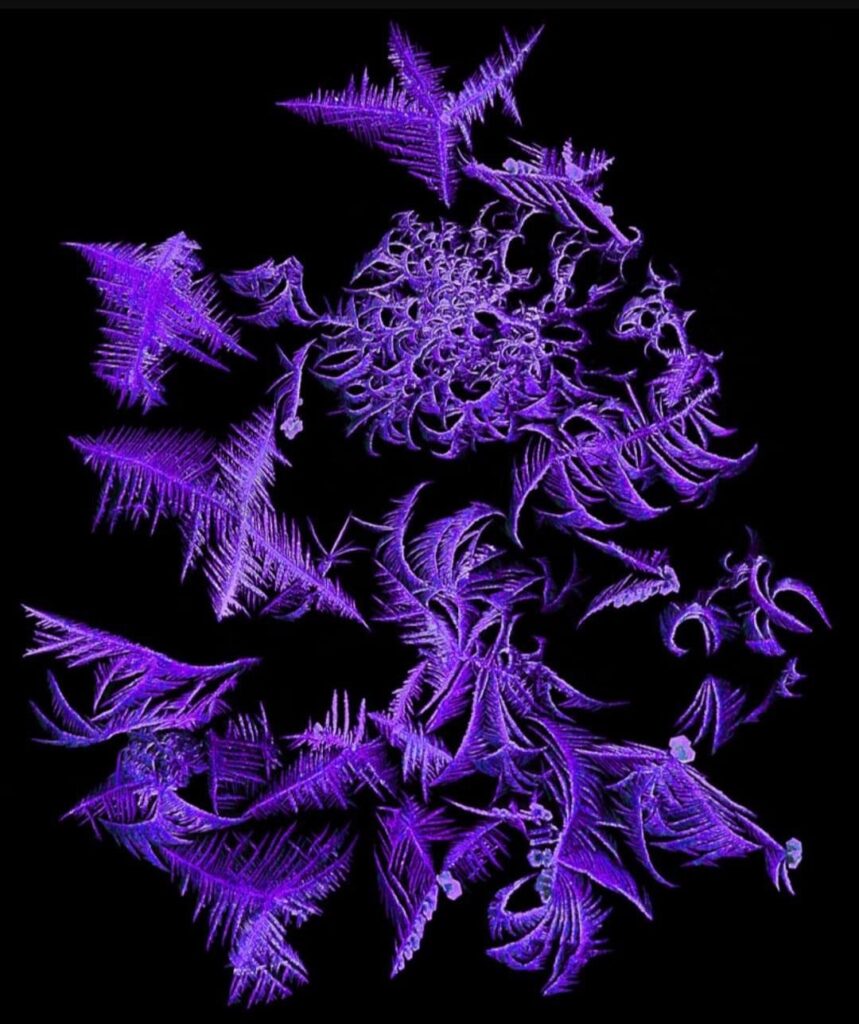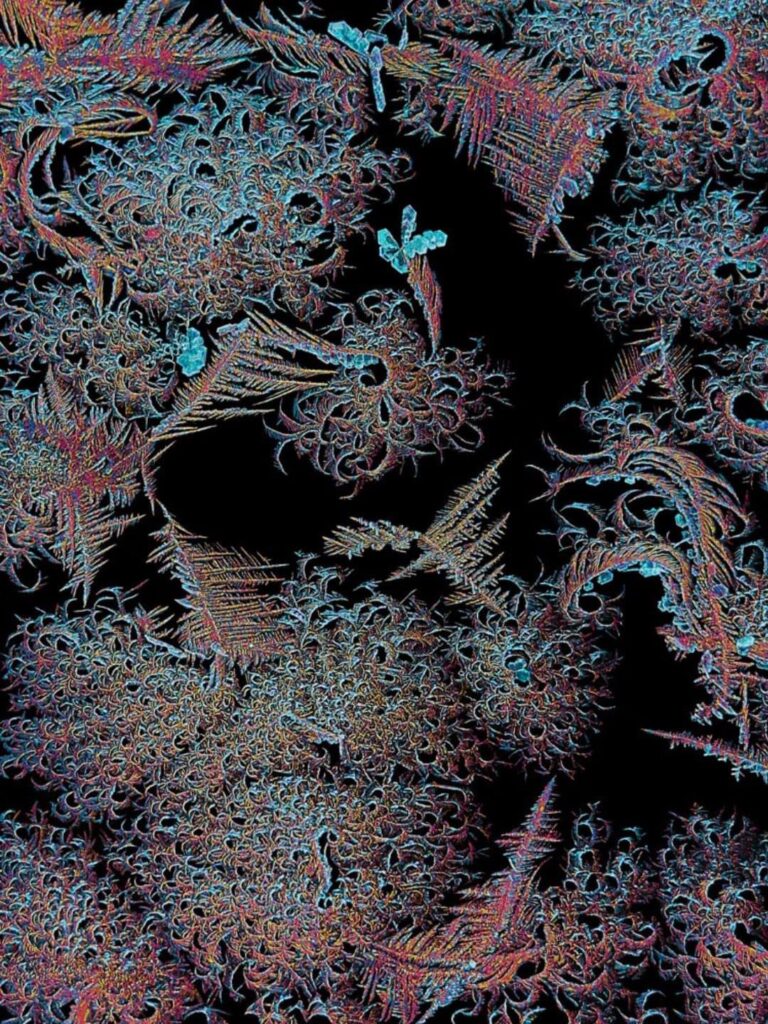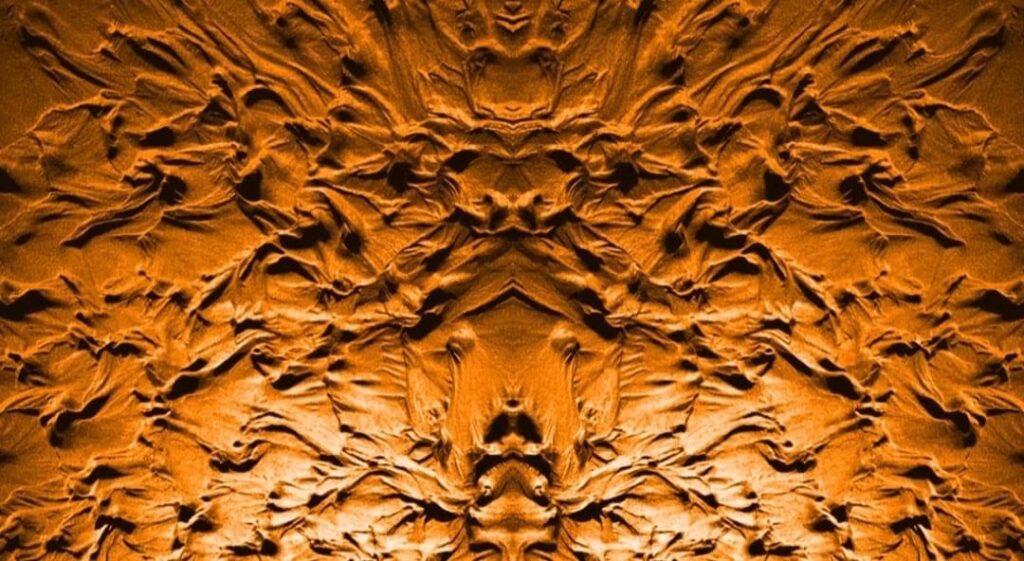It’s hard to feel secure in a world whose natural elements are in a constant state of flux. Simultaneously affected and inspired by the Covid-19 pandemic, writer, director, and narrator Patrick Lysaght attempts to forge the complex ravine of humanity’s presence on earth in Fleeting Structure, a documentary that is equal parts educational, beautiful, and urgent.
As Lysaght says himself in the film’s prologue, Fleeting Structure is a meditation on fluid flow and crystal growth, two biological processes that occur constantly in the natural world (albeit often out of sight). As an educator and researcher himself, Lysaght observes the appearance of these phenomena in nature, the ways in which they influence his own perspective on the world, and why human beings should appreciate their physical connection to them in this age of misinformation and doubt.

Divided into sections, Lysaght’s film breaks down physical interactions as they appear in various environments, specifically the interactions between air, ocean, fire, and sand. As Lysaght describes the key properties of these unique exchanges, though, he allows his mind to venture outside the confines of science and into the world of art. Images flash on screen and Lsyaght’s narration begins to take on a poetic quality that pulls us along with him. At times, he even reflects on the socio-political systems of our country and how these various scientific notions may help us view the world and its growing separation from the truth.
Composed during the turbulent years of the pandemic, Fleeting Structure grounds its viewers through stunning visuals, mellow music (Lysaght), and didactic narration. We enter through morphology, or the branch of biology that deals with living organisms, but Lysaght allows his film to venture outside research and into the everyday to give his viewers a sense of urgency about the way they live their lives and their presence in the modern age.

Weaving together both the scientific and the political is the film’s cinematography (M.A. Dellas), perhaps the highlight of Fleeting Structure. With photographs taken by Lysaght himself cycling throughout, we’re able to visualize several scientific processes in action and connect them with the narration. Colored flames bob in and out of frame followed by crystalline structures and ridged sand dunes, all composed in such a way that we sense the focus on art as much as science. We see the natural landscape in its entirety, from microscopic fractals to wide, sweeping vistas. There are even clips of Lysaght himself interspersed throughout, each time interacting with a new environment somewhere on the globe. His presence reminds us that while many of the phenomena he refers to are happening on scales both larger and smaller than the mind can comprehend, humans are inevitably linked to the natural revolutions of the planet.
Just as Lysaght says, these images are proof that science and art have common heritage. While one may be a collection of objective data and the other a subjective experience, they both require a search for some kind of truth. Each is a form of innovation, but neither oversteps their boundaries to prove a point—and this is exactly what Lysaght says is the political downfall threatening our country today. Politicians morph the truth to suit their needs, spreading misinformation without a second thought and influencing young minds everywhere. Lysaght’s film, though, is grounded, a piece of both art and science that seeks to dismantle such dangerous actions in favor of truth and stability.

Perhaps the only place where Lysaght’s film struggles is in its verbose narration which, at times, leaves the more unscientifically minded viewer confused. As he bounces from one topic to another, it’s easy to feel as though we haven’t quite spent enough time in one place to ensure we understand the significance of his words. Dense scientific jargon is hard to parse, and even Lysaght’s attempts at referencing people, places, and events that we may be more familiar with do little to assuage our confusion.
But this by no means ruins the film. What a viewer may not completely understand is usually tempered by elegant visuals and an original score that taps into our deeper emotions, making Fleeting Structure an overall success with a message that matters. The natural world has functioned for thousands of years without the threat of humans; we are visitors here, and with five mass extinctions having already occurred, it’s important to remember as much. “Human behavior is disrupting the critical balance” of the natural world, Lysaght explains, and it’s past time we did something about it. The natural world and its spectacular occurrences can provide security at a time where misinformation rages and the planet’s future is uncertain, but there is also work to be done to preserve and protect this place we call home.


